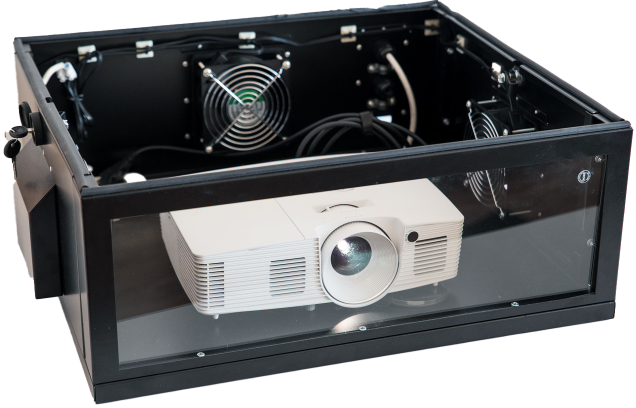Liquid Crystal Display and You
You'll hear the term LCD bandied about a lot these days, whenever people get together to brag about their home electronics. You've definitely seen a guy gesture to his own TV and sort of casually say LCD , like it's a throwaway feature. You've definitely seen the circle of guys around the Alpha TV-Owner all salivate like big dumb dogs at the very mention of these three little letters. LCD . Synonymous with good? It would appear so. But let's take a closer look at what LCD technology really is, and discuss whether or not it's the right fit for your projection needs.
В Let's start with the basics. LCD stands for liquid crystal display . It refers to the method that these particular televisions and projectors use to add color to the image. LCD is a pretty common technology. Most modern televisions are colored with liquid crystal displays. So, you've already seen it in action with your television. In a flat-screen TV, the image is displayed in grayscale pixel form on a monitor. That monitor is placed behind three flat LCD screens - one for blue, one for red, and one for green. The LCD screens receive digital signals from the video source and the LCDs act accordingly, interpreting each signal as a combination of the RGB color scale, one pixel at a time. With projectors, the execution is slightly different, but the principles are the same. LCD projection begins with a bright white light from a source lamp. That light is bounced off a series of mirrors. Two of the mirrors have undergone dichroic treatment, in order to reflect only specifically-colored wavelengths of light while blocking others from going through. The dichroic mirrors reflect red and green light, while an untreated third mirror reflects blue light. Each of these wavelengths are sent bouncing and reflecting off their own sets of mirrors. They each pass through their own individual LCD screens and then recombine in a dichroic prism. The prism sends the recombined beam of light out the lens and onto the screen. LCD projectors come with a lot of advantages. Typically, an LCD projector will display richer color dynamics when confronted with ambient light - something to consider if you're planning on using an LCD projector for outdoor cinema events. LCD projectors also use less power, and therefore generate less heat, which is always good. Also, unlike the DLP projectors you often find in movie theaters, LCD projectors typically don't create any rainbow effect on your image. LCD projectors are not without their disadvantages. The contrast on an LCD projector is notably weaker than what you would get from a DLP projector - the blacks on an LCD look more gray next to the same image on a DLP rig. LCD projectors are also bulkier, bigger than other types of projectors - even models that generate the same amount of lumens. That is going to be a consideration if what you're doing requires portability. Overall, however, LCD technology is the standard for home and office projectors for a reason. The comparative bulkiness of the LCD projector is price to pay for an image and color technology that provides the sharpest possible image available today. If the quality of the image is the highest priority for your event, then you must absolutely consider LCD technology - when you see the quality of the image, all disadvantages seem minor, trifling at best.




